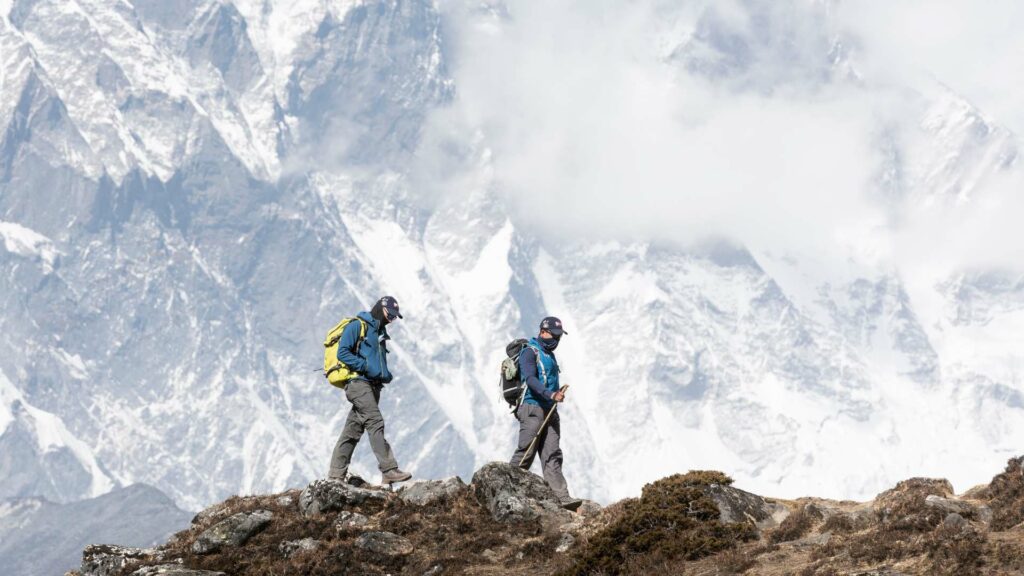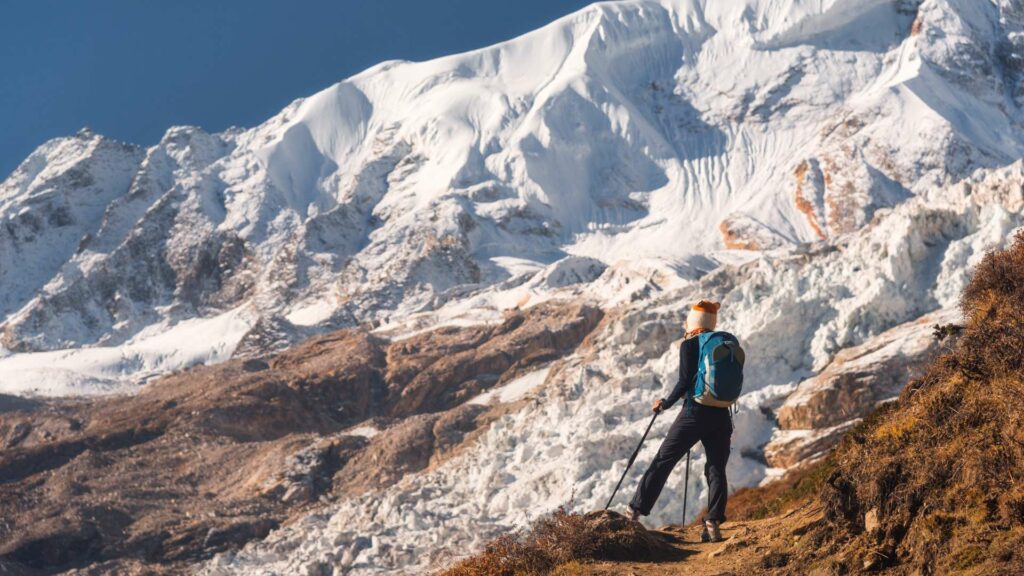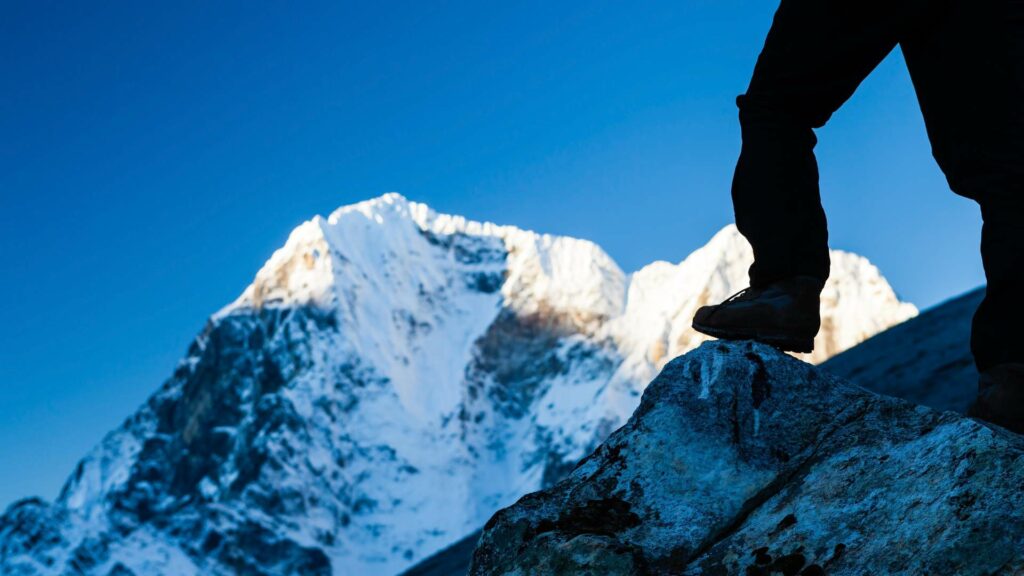Nepal Adds Six New 8,000-Meter Peaks, Total Now 14
The government of Nepal has officially added six new peaks exceeding 8,000 meters to its list, increasing the total number of eight-thousanders in the country to 14. This landmark decision significantly alters the mountaineering landscape in Nepal, which already boasts renowned summits like Mount Everest and Kanchenjunga. The newly recognized peaks are Yalung Khang (8,505m), Yalung Khang West (8,077m), Kanchenjunga Central (8,473m), Kanchenjunga South (8,476m), Lhotse Middle (8,410m), and Lhotse Shar (8,400m).
This expansion not only bolsters Nepal’s status as a top destination for climbers but also creates fresh opportunities for the nation’s mountaineering sector. In 2023 alone, over 2,500 climbing permits were issued, generating significant revenue for the country. The inclusion of these new peaks is anticipated to attract even more adventurers seeking unique challenges.
The Department of Tourism is currently preparing documentation to seek international recognition from the International Mountaineering and Climbing Federation (UIAA). Experts assert that these peaks fulfill the criteria for classification as distinct mountains due to their separate climbing routes and a col distance of at least 500 meters from other summits. If recognized on an international level, these new eight-thousanders could substantially enhance local economies and diversify climbing experiences available in Nepal
Nepal: The Ultimate Mountaineering Destination and the New Era of 8000m Peaks

Nepal is known for its climbing. The nation’s Himalayan range, which includes the famous Mount Everest and the perilous Annapurna, has long attracted intrepid travelers. In addition to its majestic peaks, Nepal is a country known for its rich cultural legacy, friendly people, and breathtakingly varied landscapes. Climbers from all over the world come to Nepal to push themselves, take in the breathtaking scenery, and feel the rush of reaching some of the highest peaks on the planet.
Recent Developments in Peak Recognition
For many years, 14 summits above 8000 meters were considered the pinnacle climbing difficulties by the mountaineering world. But because to developments in mountain study and GIS technologies, more separate peaks have been found inside the Himalayan massifs. Because of their prominence and unique climbing routes, these recently identified peaks—which were once regarded as subsidiary summits—are now categorized as independent mountains. As a result of this development, the list of 8000ers now comprises 14 peaks, including six new ones.
The Newly Recognized 8000m Peaks in Nepal
Mountains are categorized according to their topographic prominence, which determines
how different a peak is from the surrounding landscape. Advancements in satellite imaging and GPS technology have enabled researchers to accurately measure prominence and identify independent peaks. This scientific approach has led to the recognition of six new 8000-meter peaks in Nepal, each with its unique characteristics and challenges.
- Yalung Kang (8,505m)
- Yalung Khang West (8,077m)
- Kangchenjunga Central (8,473m)
- Kangchenjunga South (8,476m)
- Lhotse Middle (8,410m)
- Lhotse Shar (8,400m)
1. Yalung Kang (8,505m)
Yalung Kang is part of the Kanchenjunga range and has long been a prominent but frequently overlooked summit. Although climbers have traditionally regarded it as a component of the larger Kanchenjunga summit, its prominence and distinct features now set it out as a distinct mountain. Like Kanchenjunga itself, climbing Yalung Kang has severe technical challenges and needs a great deal of high-altitude expedition experience. Even the most experienced climbers find it to be a difficult task due to the severe weather, sheer ice cliffs, and crevasses.
- Height: 8,505m/ 27903 ft
- Latitude: 27º 42′ 18″
- Longitude: 88º 08′ 19″
- Himalayan Range: Kangchenjunga
- District: Taplejung (Nepal)
- Municipality/Rural Municipality: Phaktanglung
Highlights:
- Also known as Kangchenjunga West
- First summited in 1973
- Features steep ridges and icy slopes
- Highly technical climb requiring advanced mountaineering skills
- One of the least-explored 8000m peaks
2. Yalung Khang West (8,077m)
Yalung Khang West is a lesser-known peak in the expansive Kanchenjunga range that is frequently overlooked in favor of its more prominent peers. With its sheer ice cliffs, challenging ridges, and erratic weather, it offers tremendous climbing challenges despite its comparatively modest elevation. Only the most experienced climbers seeking new difficulties beyond the popular 8000-meter summits are drawn to the mountain, which is still completely unknown.
- Height: 8,077m/ 26499 ft
- Latitude: 27° 42’22”
- Longitude: 88° 07’32”
- Himalayan Range: Kangchenjunga
- District: Taplejung (Nepal)
- Municipality/Rural Municipality: Phaktanglung
Highlights
- Located west of the main Kanchenjunga summit
- Features sheer ice faces and complex ridgelines
- Requires advanced technical mountaineering expertise
- Rarely attempted due to its remote and challenging nature
- Part of one of the least-climbed high-altitude mountain zones
3. Kanchenjunga Central (8,473m)
Kanchenjunga Central is the third independent peak within the Kanchenjunga massif. It is known for its pyramidal shape and steep slopes. Located between Kanchenjunga South and the main Kanchenjunga summit, Kangchenjunga Central is a powerful and impressive mountain. The mountain has some of the hardest climbing routes, requiring a high level of endurance and technical competence. It is still one of the least-climbed 8000-meter summits because of its isolated position and tremendous difficulty.
- Height: 8,473m/ 27799 ft
- Latitude: 27º 41′ 46
- Longitude: 88º 09′ 12
- Himalayan Range: Kangchenjunga
- District: Taplejung (Nepal)/NI
- Municipality/Rural Municipality: Phaktanglung
Key points:
- First mounted in 1978
- Known for its steep, rocky slopes and narrow ridges
- Requires expert-level ice and rock climbing proficiency
- Faces harsh weather conditions and extreme isolation
- Offers an untouched and adventurous climbing experience

4. Kanchenjunga South (8,476m)
A separate mountain in the Kanchenjunga range, Kanchenjunga South is renowned for its difficult climbs and erratic weather. With its deep crevasses, ice-covered ridges, and steep slopes, the mountain presents climbers with a very challenging task. The peak’s recognition provides a new objective for mountaineers who have already tackled Kanchenjunga and are seeking fresh challenges in the same region. The summit is crystal clear from Kanchenjunga region as well.
- Height: 8,476m/ 27808 ft
- Latitude: 27º 41′ 32″
- Longitude: 88º 09′ 23″
- Himalayan Range: Kangchenjunga
- District: Taplejung (Nepal)/NI
- Municipality/Rural Municipality: Phaktanglung/NI
Highlights
- First ascended in 1978
- Known for severe weather and avalanche risks
- Demands a high level of technical expertise in ice climbing
- One of the least-climbed 8000-meter peaks
- Offers an intense, remote, and isolated expedition experience
5. Lhotse Middle (8,410m)
A difficult sub-peak of Lhotse, Lhotse Middle is frequently eclipsed by its taller companion, Lhotse Main. Sharp ridges, unstable ice formations, and a very technical ascent make it an extremely tough climb, even though it is significantly lower in height. It is still one of the least-visited 8000-meter peaks because of its isolated position and late 2001 first ascent.
- Height: 8,410m/ 27592 ft
- Latitude: 27º 57′ 40″
- Longitude: 86º 56′ 27″
- Himalayan Range: Lhotse
- District: Solukhumbu (Nepal)/NC
- Municipality/Rural Municipality: Khumbu Pasang Lhamu/NC
Highlights:
- First summited in 2001
- Features highly technical ice climbing sections
- Less climbed due to its difficulty and relative obscurity
- Extreme altitude, harsh weather, and exposed ridges
- Requires elite mountaineering expertise
6. Lhotse Shar (8,400m)
The eastern sub-peak of the Lhotse massif, Lhotse Shar, is known for its difficult approach and steep ice cliffs. It is a distinct climbing target with its own set of significant challenges, even though it is part of the Lhotse range. It was first ascended in 1970 and is well-known for its steep slopes and erratic snow conditions, which require mountaineers to possess extraordinary technical skill and stamina.
- Height: 8,400m/ 27559 ft
- Latitude: 27º 57′ 30″
- Longitude: 86º 56′ 44″
- Himalayan Range: Lhotse
- District: Solukhumbu (Nepal)/NC
- Municipality/Rural Municipality: Khumbu Pasang Lhamu/NC
Key points:
- First summited in 1970
- Known for treacherous ice walls and steep ridges
- Requires a high level of technical ice-climbing skills
- Among the toughest 8000m peaks due to its extreme conditions
- A challenging objective for experienced high-altitude climbers
The list of globally recognized eight-thousanders in Nepal includes Everest (8,848.86 meters), Kanchenjunga (8,586 meters), Lhotse (8,516 meters), Makalu (8,463 meters), Cho Oyu (8,201 meters), Dhaulagiri (8,167 meters), Manaslu (8,163 meters), and, Annapurna I (8,091 meters).
Challenges of Climbing These New Peaks
These recently identified peaks are very dangerous for climbers since they are located in some of the most isolated and hostile areas of the Himalayas. Unpredictable weather patterns can increase the risk of frostbite and hypothermia by bringing with them unexpected storms, whiteouts, and extremely low temperatures. The ascent is made even more dangerous by the ongoing risk of avalanches and rockfalls. Climbers must have advanced ice and rock climbing abilities and a great deal of expertise at high elevations due to the extremely challenging nature of these peaks. Physical conditioning is necessary to endure the taxing climbs, and acclimatization is crucial to preventing altitude sickness. Only those with the proper training, careful preparation, and expert guidance can hope to conquer these challenging summits.
Optimal Times for Mountaineering Expeditions

The perfect time for trek or climbing in Nepal are spring and autumn. Spring(March-May) has a clear sky, the temperature is moderate, and the weather is quiet. It is ideal for climbing peaks like Everest because of the perfect snow conditions and reduced avalanche dangers. Also, autumn offers cold weather with dry trails and clear skies after the rain. It’s perfect for exploring isolated peaks and taking in breathtaking mountain vistas because it’s less populated. However, due to the complexities of these new peaks, expeditions should be meticulously planned, considering the ideal summit windows and logistical requirements.
Summing up
The recently acknowledged 8000-meter peaks in Nepal represent a significant advancement in the field of climbing, broadening climbers’ perspectives and solidifying Nepal’s standing as the top high-altitude adventure destination. With new challenges and opportunities for exploration, this recognition marks the beginning of a new age in climbing. Nepal’s mountains continue to inspire and test the limits of human endurance as the climbing community embraces these peaks. The lure of these new peaks offers an alluring task that is just waiting to be overcome, regardless of your level of experience as an alpinist or your desire to become an explorer. Thus, gather your belongings, get ready for the trip, and set out on the once-in-a-lifetime experience in the heart of the Himalayas.
